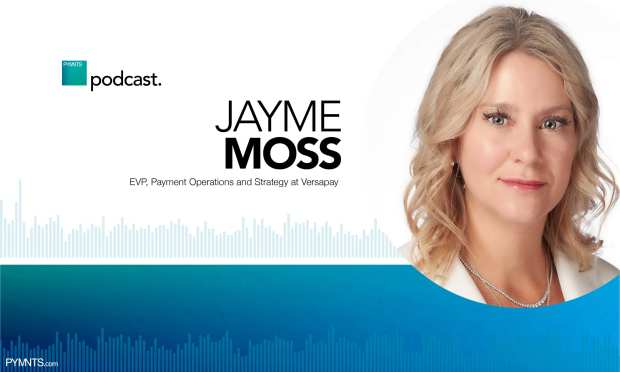B2B Payments Digital Makeover Must Include Clearing Payments Processing ‘Blind Spots’

The way customers expect to receive and make payments presents one of the biggest challenges facing merchants, said VersaPay Executive Vice President of Payments Operations and Strategy Jayme Moss.
When it comes to payment processing, merchants are also becoming increasingly aware of the blind spots they have dealt with when engaging with their partners, as well as potential buyers. Furthermore, the payment experience has become a point of contention, and as for how buyers and sellers engage with one another, we’re seeing a shift toward merchants becoming more customer-focused and empowering their customers to pay the way they want to pay — digitally and on their terms.
“With remote work, it was really hard for [our] customers to receive payments, particularly paper checks,” Moss said.
Even though they had been getting paid with paper for decades, she noted, many businesses could not perform the way they used to while the pandemic raged.
“We’ve recognized that there is a much larger customer-focused approach that was needed,” she said. And with a nod to Versapay, she said, “we really have focused on helping empower our merchants to let their customers pay the way they want to pay, whether its via customer portals or with ACH or any number of other ways to pay.”
Having survived the pandemic thus far, many merchants are expecting more from their payment providers, Moss said, noting that merchants are becoming savvier about transaction flows. While all processors can do that, there’s a value add in knowing what information can be sent with transactions and how efficient flows can help boost margins.
Merchants can see fees that are 40 percent higher than they might otherwise be just by signing on with processors who do not know how to effectively manage payments. One key way to reduce the transaction “charge” is to tackle the interchange fee. Optimizing that part of the transaction can cut down the largest component of the transaction cost that accrues to merchants.
Trimming the Interchange
As Moss told PYMNTS, several factors go into interchange costs — such as the type of card, the amount of information that’s passed along with a transaction, the time from authorization to settlement and if there are multiple authorizations.
“If you take a more sophisticated approach and you’re with a processor that really understands that transaction flow through automation, you can reauthorize stale transactions,” she said. “You can do authorization reversals on unused authorizations. You can even complete partial authorizations when a product is only partially shipped and the rest of it ships later.”
That comes as processors can pass additional data (referred to as Level 2 and Level 3) along with the transaction, whether it’s product codes, invoice numbers, or tax rates. Merchants are able to achieve higher levels of savings when more data is sent along with a transaction.
The burden is on the processors to operate efficiently, too, said Moss.
“If you don’t control the entire transaction flow with your merchants, it really does have some impact, whether it’s increased fees or just a more difficult customer experience,” she said.
Currently, many payment processors rely on multiple vendors to assist in tackling their customers’ payment needs — and so they don’t control the entire customer experience. They often leverage shopping carts, plugins, gateways and customer portals from varying third parties as many are unable to provide a holistic suite of services themselves.
“Controlling the entire customer experience can allow merchants to accept payments more quickly,” she said, especially with embedded payment solutions.
VersaPay, operating as a payment facilitator, can do the underwriting, onboarding and other functions.
“When you have your own gateway, you can do least cost routing, which also is very significant savings for the customer,” she said. “So, we really made it a priority to develop and control every facet of the transaction.”
The Ubers and Amazons of the world were integral to transforming the payment experience, and now buyers in the B2B community expect the same seamless, easy-to-use billing and payment process.
“And we want to take that same exact experience to the B2B market,” she said.
